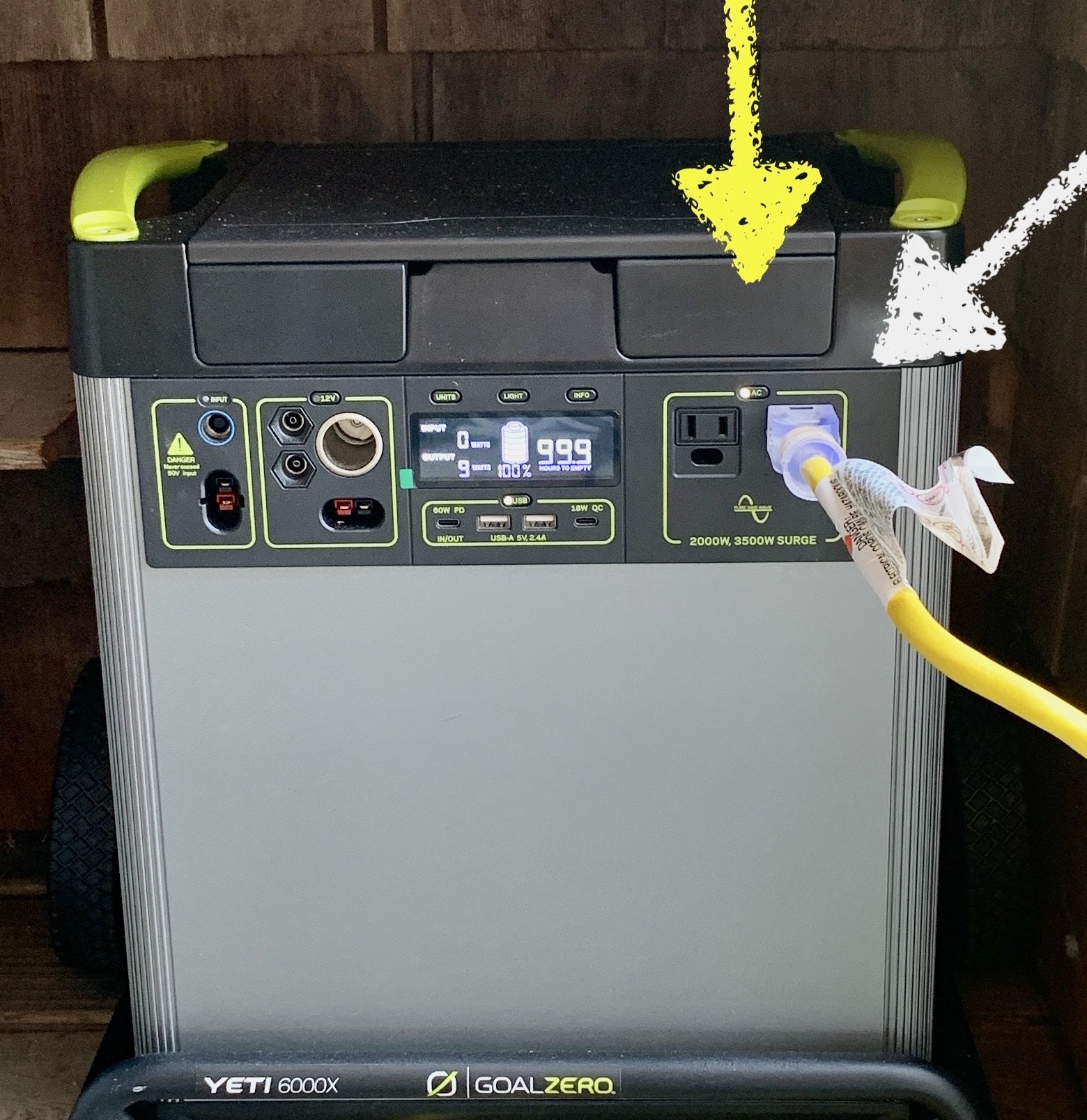FAQ — Casa Pacis
RETURN TO CASA PACIS HOME PAGE
————————————————————
Power Outages — Use of “Yeti-6000X” Battery Back-up System
Method (1): COMMON POWER OUTAGES
Photo 1: Yeti 6000X battery. Yellow arrow points to [tiny] on/off button; white arrow points to 120V outlets. Yellow cable goes to an appliance of choice (Method (1)) or to the transfer switch (Method (2)).
These occur relatively more frequently than PSPS outages, and they last typically only a short time (up to a few hours):
— Find a powerful battery “Yeti 6000X” (Photo 1) in a closet.
— Unplug charger cable (from lower left on front panel)
— Roll Yeti to where you like power and plug items directly into outlets (white arrow).
— Use extension cords as needed.
— Activate on/off button (yellow arrow in Photo 1).
— Limit combined power drawn at any one time to not more than 1500 W *
— After end of power outage, re-position Yeti and re-connect input power, to re-charge Yeti.
You may plug in utility items (microwave, water kettle, hair dryer) as you wish, but use ONLY ONE OF THESE AT ANY ONE TIME (the Yeti power output is limited to 1500 Watts, and these appliances use about 1000 W each, and using two of these at the same time will blow a fuse). Lights, TV, etc. don’t matter, as these use only very little power, and can be on simultaneously.
==================================
Method (2): SCHEDULED or “PSPS” OUTAGES (VIA TRANSFER SWITCH)
We will typically inform you if and when a PSPS outage is forecast.
You may find it most convenient to just use Method (1), even during PSPS outages.
Else we have provided a transfer switch arrangement that is normally only to be used by ourselves but may from time to time be made available also to valued guests who have the required technical know-how.



